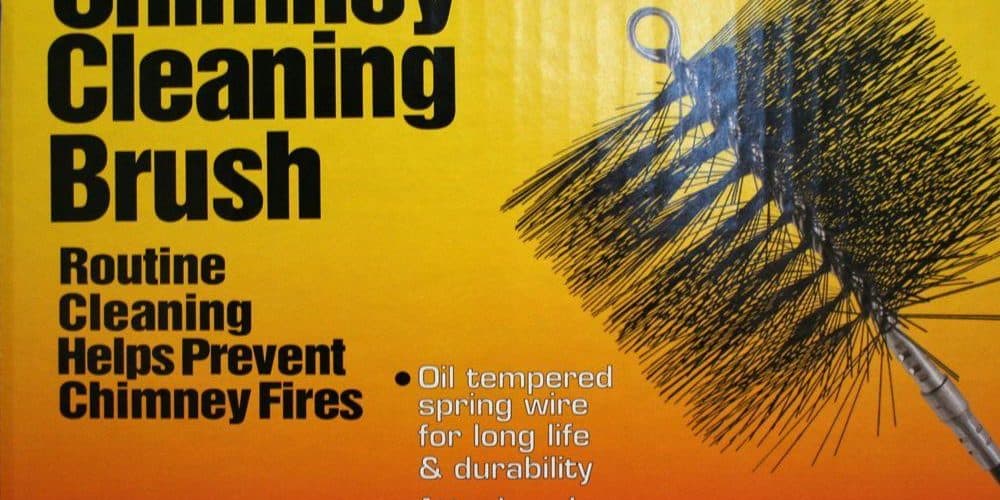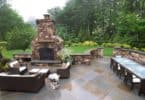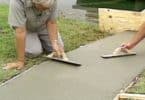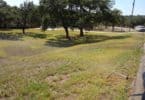A fireplace or wood-burning stove is a cheerful, useful and practical part of your home. Any fuel-burning fixture with a chimney, however, requires proper maintenance. Creosote and soot build up on chimney walls and reduce the amount of air pulled in by the fireplace or stove. The reduced draw can cause smoke to pour out into the room. Creosote is also highly flammable and acts as the perfect fuel for a chimney fire. To keep your home and family safe, make sure to clean your chimney all through the heating season using a properly-sized chimney brush.
Chimney brushes come in different shapes, sizes and materials. All are designed with the same purpose: to keep chimney flues free of dangerous creosote build-up and to keep your home safe from a chimney fire. Chimney fires can quickly spread to the rest of your home and cause serious damage. Using the right chimney sweep brush, perhaps in conjunction with a liquid or powder creosote inhibitor, can greatly reduce your risk of having a chimney fire.
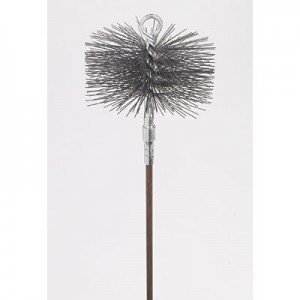
A traditional wire bristle brush works well for most masonry chimneys, but wire is not recommended for use on metal chimneys and chimney liners. Wire chimney sweep brushes are routinely used by chimney-cleaning professionals and are effective cleaning tools. Homeowner versions of professional brushes are available.
Flat wire bristle brushes have stiffer bristles than standard wire brushes. They are constructed with concentric rows of flat tines that allow for improved scraping action. These are heavy-duty brushes and are recommended for chimneys having problems with glaze creosote.
Polypropylene (poly) chimney cleaning brushes are best for metal chimneys and liners, pre-fabricated chimneys or masonry chimneys where the masonry has become fragile with age. Most poly brushes are quite rigid and can be hard to work down into a dirty chimney. These brushes are inflexible and will not do not go around the bends of a chimney system. When there are bends or the amount of creosote is heavy, a pre-fab poly brush, which is more flexible than a regular poly brush, can making cleaning a metal chimney easier.
Once you know the type of chimney brush that is right for your chimney, you will have to determine the size and shape you need. Unfortunately, there are few standards in fireplace chimneys, which come in all shapes and sizes. Ideally, you will want to match the inside diameter of your chimney with a brush that is close to its size and not more than 1/2 inch wider than the length or width. A brush that is not wide enough will not effectively clean your chimney and will leave dangerous creosote deposits behind. A brush that is too wide may not fit properly down into the chimney.
You will need to measure the inside of your chimney, both the length and width. To do this, you will most likely need to climb onto the roof of your house or at least stand atop a ladder. Proper caution should be taken to ensure the ladder is stable and you are safe at all times. Note the shape of your chimney, as well as the inside dimensions, since chimney brushes are offered in several different shapes: round, square, rectangular and sometimes oval.
When you have the shape and dimensions in hand and know the sort of brush you are looking for, you are ready to search for the perfect brush for your chimney. Standard homeowner quality brushes are available in sizes from 5 to 12 inches and in standard shapes. Most reputable dealers in chimney and fireplace accessories will help you if you are unsure exactly which brush to purchase. Online sites often have contact phone numbers or e-mail addresses where you can ask a question. If the brush you need is not a standard size, many dealers offer custom brushes that can be made to the dimensions you need.
An important accessory to consider when finding a brush is the type and length of rod you need to maneuver through your chimney system. You will need to account for the number of standard-length rods needed to properly clean the entire length of your chimney.
Chimney brush rods are usually 2-1/2 to 5 feet in length. Some styles are only slightly bendable and others are highly flexible, so take the bends in your system into account when purchasing rods. Again, if you are not sure what you need, consult with a fireplace professional.
You may also want to invest in specialized fireplace accessories that make cleaning your chimney system easier. A small hand brush can help you get around the flue and in the corners or a large hand brush can aid with sweeping soot and cinders out of the firebox. There are many other handy fireplace accessories available, from fire gloves to chemical cleaning sprays, so be sure to research which ones will help you the most.
Whatever type of fireplace or fuel-burning stove you own, proper maintenance is a necessity. Be sure to do the research, measure accurately and secure the most appropriate brush for your chimney. Choosing the right chimney brush for your chimney system will save you money, keep your home and family safe and allow you to enjoy your chimney and its cheery glow for years to come.
<>

